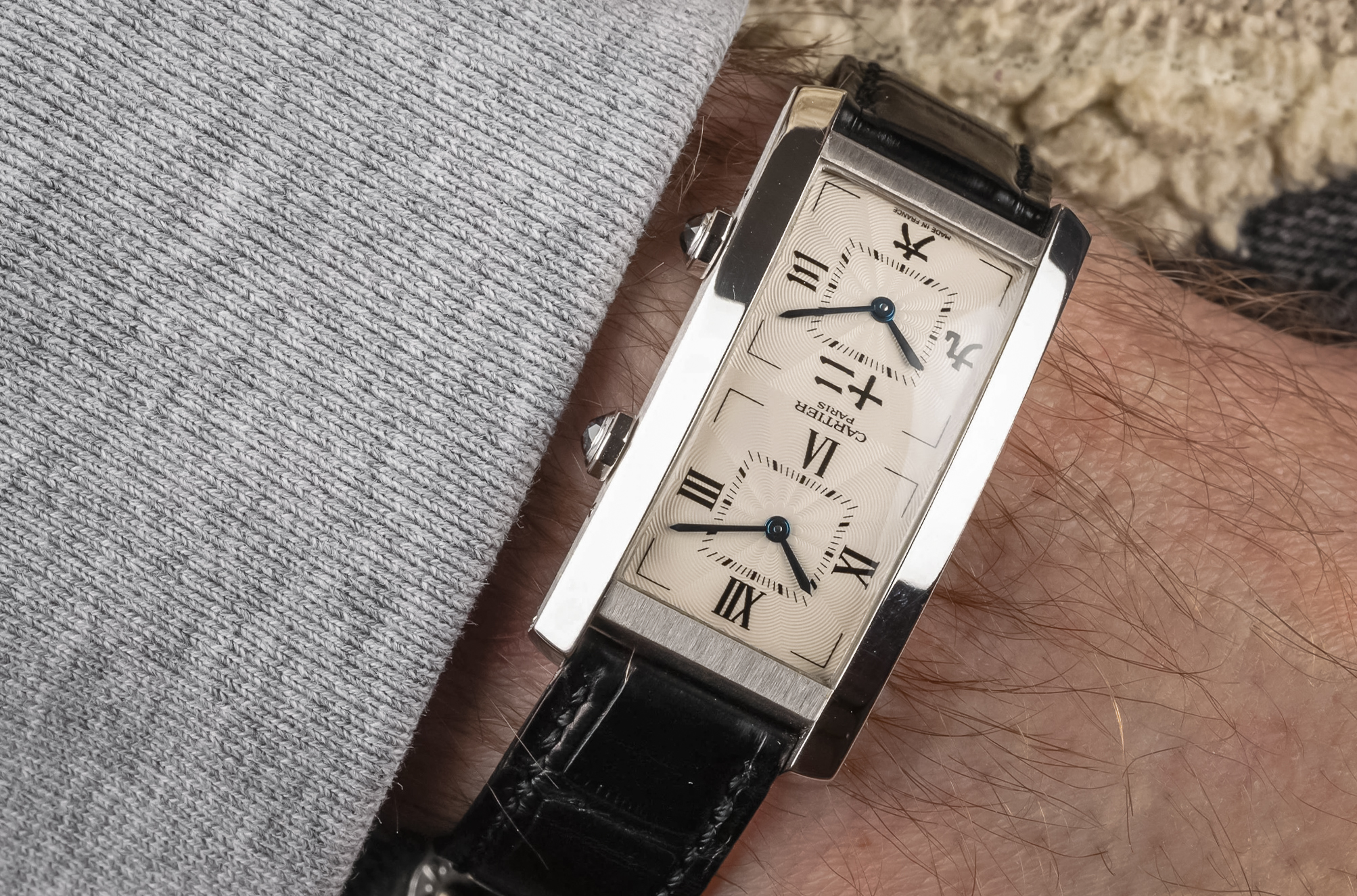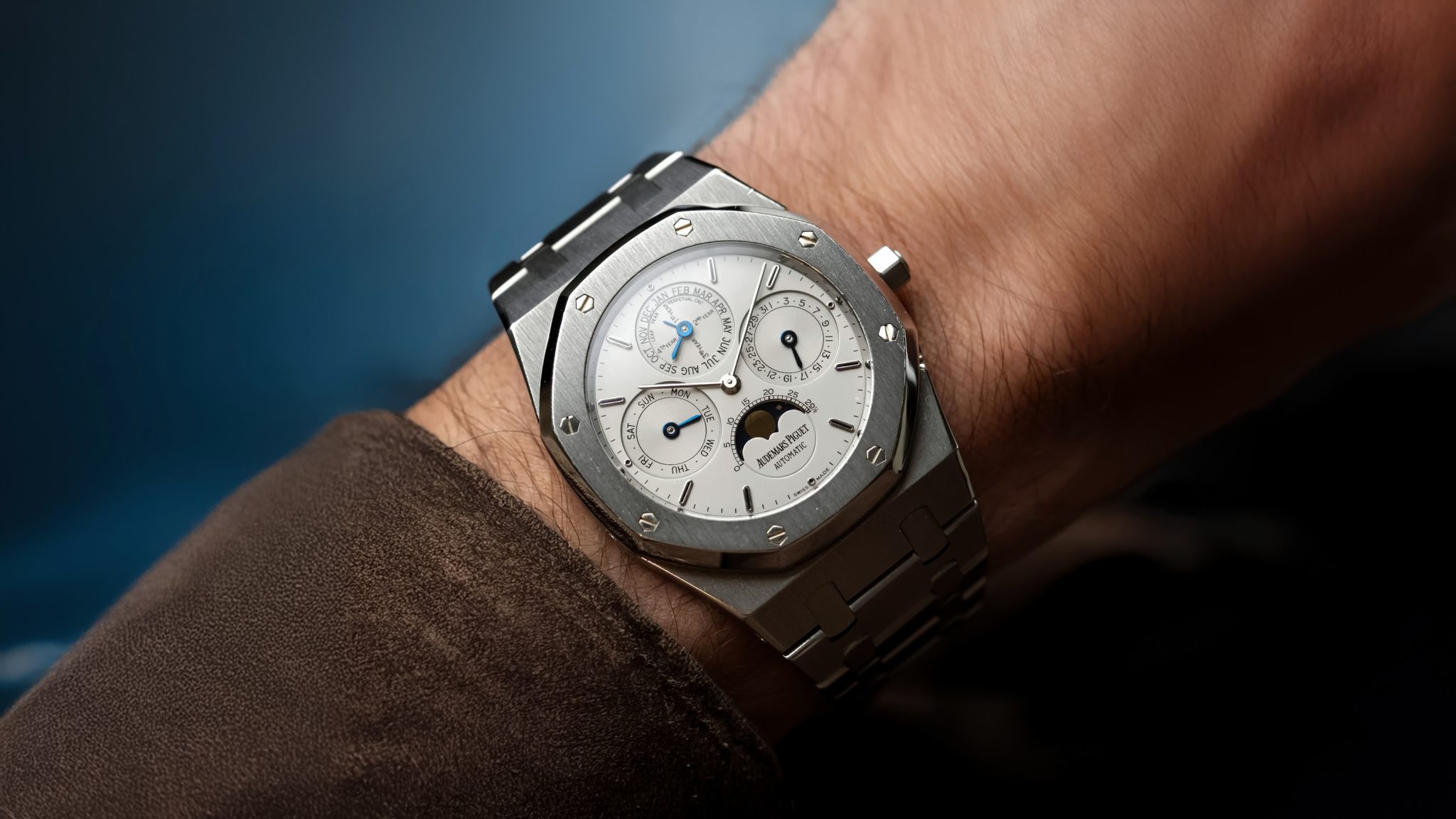
Asian Market Cartier CPCP Tank Cintrée Dual Time
Very few watches have the privilege of contributing toward wider culture. One could fairly say the Submariner expanded the purview of tool watches as a category, transcending purpose for luxury. The G-Shock married indestructible construction to creative design, capturing rappers and armed forces simultaneously in admiration. Before either, though, Jacqueline Kennedy wore a Tank. In doing so, she defined an entire category of style for decades to come. To a much smaller, far more niche audience, this unassuming Cintrée did the same. This is not some long CPCP Tank, it’s a cultural masterclass.
Cartier’s re-entry to mechanical watchmaking was a strong one. Famed initially for the 1920 mechanical Tank, Cartier was a quick adopter of quartz. By the mid 1980s, 75% of their range was entirely electric (due to some acquisitions/mergers that created quartz vertical integration). In fairness, the technology was suited to the application. The Tank is quite a delicate watch and, though very historically significant, perhaps more fashion-oriented than its competitors. However, by the early 90s, Cartier had seen the writing on the wall. Watchmaking luxury was to be based in mechanics. The result was the founding of a new division, the Collection Privée Cartier Paris (CPCP), focussed on re-introducing mechanical haute horology.


The Tank Cintreé had been around since 1921, shortly after the 1919 Tank. It was adopted by British soldiers in the Boer War for its relatively masculine proportion and the fact that it wasn’t a pocket watch. Post war, those same credentials propelled it to be the ultimate aesthetic pair for timeless style, as it was adopted by Fred Astaire, Steve McQueen and Ralph Lauren. In 1990, CPCP-era ambition collided with the Cintrée to create a beautifully bizarre dual time, incorporating two dial and two ETA 2412 calibres in the elongated 46×23mm case proportion. The dual time, more than most CPCP pieces, was a design and commercial success.
In 2004, Cartier wanted a way to say thank you to their Eastern customers, many of whom had carried their watchmaking arm through years of less enthusiastic markets. With grace typical of the marque, they studied their customers. Instead of making a blue dial or something a bit blasé, Cartier observed that many of these clients were traveling extensively between the East and West. Sure, the dual time met this need. But Cartier goes a step beyond, and they created a lower dial with Chinese numerals at the quarter hours in an unadvertised 100-example limited edition run. Discreetly and somewhat accidentally, Cartier had created a watch which spoke directly to the core of many collectors: those who found themselves, either by location or spirit, a hybrid of two cultures. Cartier, without necessarily trying, had created a watch which bridged those two cultures with complete grace. As a result, these 100 examples have become almost nonexistent in the market in recent years.

This 2009 example comes in an 18K white gold case in fantastic condition. It is a full set, with CPCP boxes and guarantees. The case shows only light surface wear, with a few small visible hairlines on an otherwise perfect surface. Its dial, flawless. The case has full proportions and I would suspect unpolished. This series is numbered, so that’s a plus. It comes from a well regarded Parisian retailer.
Find this Asian Market CPCP Cintrée Dual Time here from Tokant Paris for 47950 EUR.








